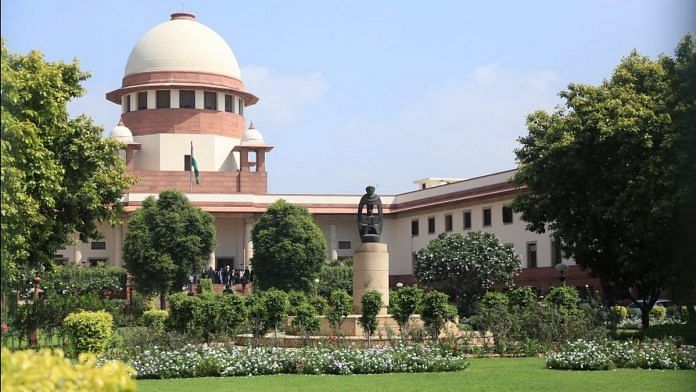When the Supreme Court was informed in July that the mediation panel had failed to settle the Ram Janmabhoomi-Babri Masjid land dispute, the five-judge constitutional bench did not leave anything to chance. Daily hearings began on 6 August and after 40 days of intense arguments, it was a wrap on 16 October.
When the hearing was at an advanced stage, a tiny door of hope was left open with Chief Justice of India Ranjan Gogoi saying parties could still resolve the matter through mediation even as the court proceedings continued.
However, the last day of Ayodhya hearing was not about the concluding arguments. Instead, the headlines were based on how the mediators had arrived at a settlement. It had all the elements of a big courtroom drama and breaking news frenzy – a sealed cover, suspense, talk of withdrawal of claim, and the tearing up of papers. And that’s why the Ayodhya mediation is ThePrint’s newsmaker of the week.
Also read: Wild rumour, torn papers, 5 pm deadline — Ayodhya hearing was definition of courtroom drama
Sunni Waqf Board, and ‘giving up of claim’
When the Supreme Court had appointed retired SC judge Justice Fakir Muhammad Ibrahim Kalifullah, expert mediator Sriram Panchu, and spiritual guru Ravi Shankar to bring all the warring parties to mediate in the title suit, the hope was to achieve an amicable solution with a caveat from the mediation committee banning media reporting on its proceedings.
But the sudden move by the UP Sunni Central Waqf Board to give up its claim on the disputed site took all the parties by surprise, including senior lawyer Rajeev Dhavan, who, after arguing on behalf of the board until the end of the day, said at the end he had no idea about the withdrawal.
It was only the following day when the lawyer for the chairman of Sunni Board, Zufar Ahmad Farooqui, informed that such a proposal had indeed been made and that a settlement was arrived at by the parties.
Although the mediators were refrained from speaking to the media about the process, Ravi Shankar took to Twitter and thanked all the parties in the mediation “for their sincere & tireless participation”.
I thank the Supreme Court for the confidence they have placed in the mediation. I thank all the parties for their sincere & tireless participation. The entire mediation process happened with a sense of brotherhood & understanding which is a testament to the values of this nation.
— Gurudev Sri Sri Ravi Shankar (@SriSri) October 16, 2019
Also read: There are 3 claims to Ayodhya — law, memory & faith. It’s not a simple Hindu-Muslim dispute
Clouds of doubt over mediation
But even before people could speculate that there might not be a court verdict at all with mediators seemingly arriving at a settlement, five lawyers on behalf of all Muslim parties, barring Sunni and Shia Waqf boards, submitted a statement to the Supreme Court, clearly stating that they would not agree to any such proposal.
In the letter, the parties note that only Ram Janmabhoomi Punarudhar Samiti, Sunni Waqf Board and Nirmohi Akhara had participated in the mediation while various other Hindu and Muslim parties had abandoned the process. The statement also questions how the mediation proceedings were leaked to the press.
Interestingly, on 16 October, when the hearings concluded, Sriram Panchu was in the courtroom. He submitted two reports in sealed covers. He was also seen communicating with the waqf board chairman Zufar Ahmad Farooqui.
The Muslim parties accused the mediators of working in cahoots with the Sunni Waqf Board to make them surrender their rights over the land.
The thumb rule of the mediation is that all parties must agree to the settlement. If not, the result is never enforceable in a court of law.
Although there are high chances that this mediation report will only end up as a reference in the final Ayodhya verdict, the entire episode of holding mediation talks without all parties on board puts a cloud of doubt over the much-hyped resolution mechanism.



